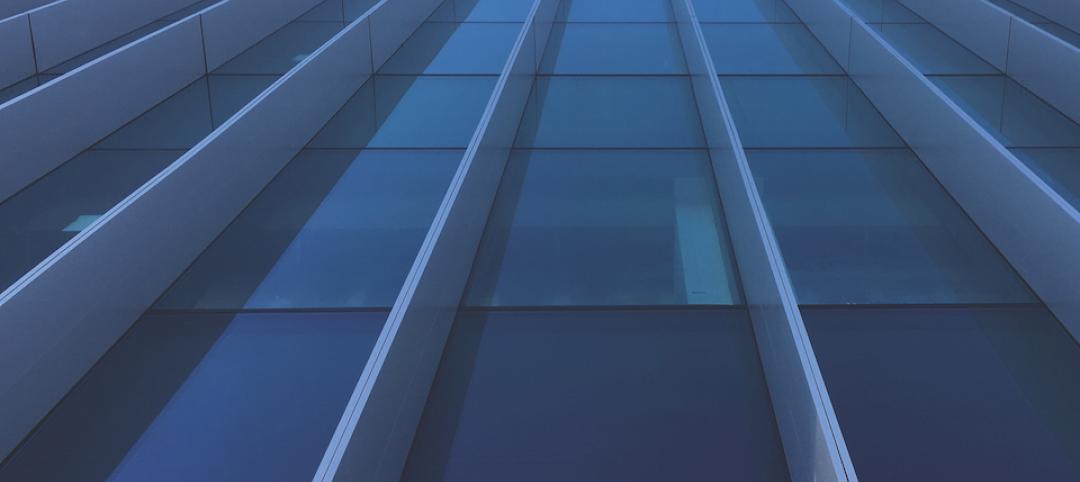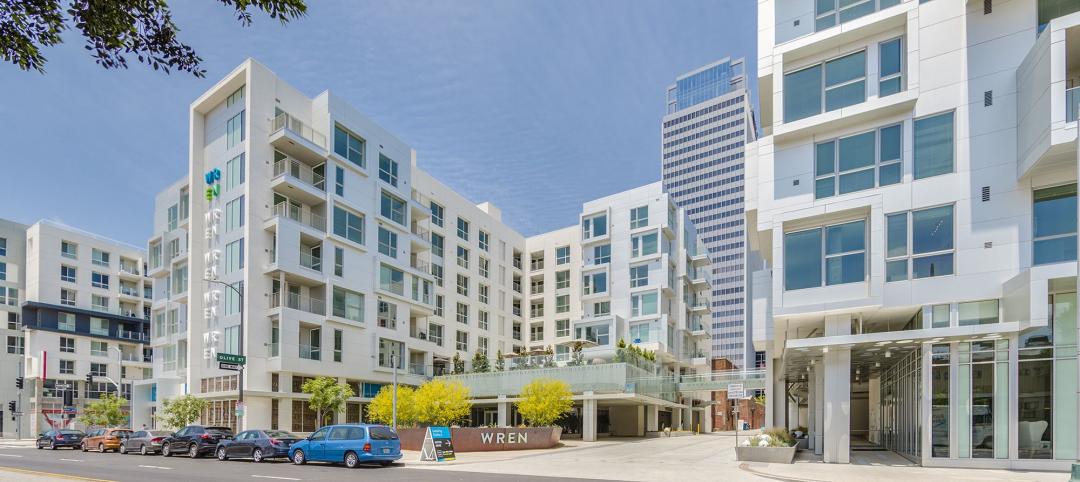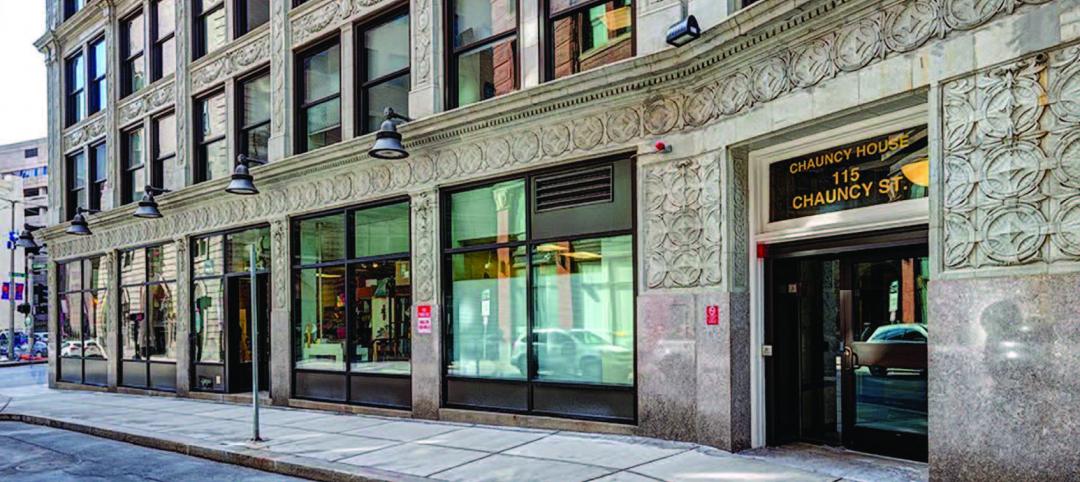Failure modes of glass systems under the extreme heat and pressures of building fires are reasonably well known, yet still hard to predict. In a recent fire simulation on a three-story structure built in India and studied by Underwriters Laboratories, the façade system of toughened glass and aluminum composite panels performed better than expected. That is, the glass did: As the aluminum cladding’s window frames deformed and expanded under heat, “the glass panels did not break due to fire but fell to the ground in intact form,” wrote the captivated research team.
In many cases, however, glass panels and structural glazings subjected to fire do fail. “Compared to other traditional materials for buildings, standard glass is typically characterized by brittle behavior and limited tensile resistance,” according to Chiara Bedon, PhD, a professor at Italy’s University of Trieste, who has studied structural glass systems exposed to fire. “The intrinsic properties of glass—together with typically limited thickness-to-size ratios for glazing elements, the mutual interaction of glass components with adjacent constructional elements as a part of full assemblies, and the combination of mechanical and thermal phenomena—make glass structures highly vulnerable,” says Bedon.
Many of those phenomena are considered in building codes, life-safety codes, and material performance standards. Products such as wire glass—including glazings with the unique look of cast and polished wire, as well as laminated and multi-laminated glazings and glass block—are engineered to block smoke and flames and to withstand high pressures and certain effects of hose streams, all of which can occur during fire events. Many types of glazings can withstand thermal shock, another key phenomenon. Glass that is fire-rated may als
LEARNING OBJECTIVES
After reading this article, you should be able to:
• Describe the safety and security benefits of fire-rated glazing and window systems.
• Discuss the opportunities and limitations of fire-rated glazing applications.
• Compare the competing priorities, codes, and standards related to the specification and detailing of transparent enclosures.
• List and contrast the systems and products used for fire-rate glass assemblies.
TAKE THIS AIA COURSE AT BDCUNIVERSITY.COM
| Sponsored by: |  |
Related Stories
BD+C University Course | Aug 1, 2019
Design and construction of cannabis facilities [AIA course]
AEC firms are rushing to fill orders for cannabis facilities in the 33 states where the sale of medical marijuana is now legal. This course is worth 1.0 AIA learning units.
BD+C University Course | Jul 12, 2019
Roofing Drainage Systems [AIA course]
While the various layers of the roof assembly play a key role in keeping moisture from infiltrating into the interior, adequate weather protection also depends on the roof’s ability to drain moisture away from the building. This course is worth 1.0 AIA LU/HSW.
BD+C University Course | Jul 8, 2019
Value engineering: Where quality meets cost control [AIA course]
This course covers the history of value engineering, the benefits it provides, and the value engineering methodology.
BD+C University Course | Jul 8, 2019
Shadow box design: To vent or not to vent [AIA course]
A curtain wall shadow box is a spandrel assembly consisting of vision glass at the building exterior and an opaque infill at the interior side of the curtain wall system. This course is worth 1.0 AIA LU/HSW.
BD+C University Course | May 30, 2019
Creating real estate value with commercial office reconstruction [AIA course]
Leading owners, developers, and project teams are employing thoughtful upgrades to older buildings to create meaningful spaces that help attract and retain top tenants—and their best people.
BD+C University Course | May 10, 2019
Designing behavioral health facilities [AIA course]
Recent gun violence, the opioid epidemic, and other social issues with significant behavioral health implications underscore the need for behavioral health facilities.
BD+C University Course | Apr 24, 2019
Sandwich cladding primer [AIA course]
Learn about the differences in design, structural integrity, and insulating capacity between various types of sandwich claddings. This AIA CES course is worth 1.0 learning units.
BD+C University Course | Apr 23, 2019
Multifamily, mid-rise buildings using wood construction [AIA course]
This AIA CES course outlines the reasons for the rising popularity of wood in multifamily buildings; reviews code compliance and fire safety considerations; and discusses techniques for successful wood building designs.
BD+C University Course | Apr 17, 2019
Urban placemaking: Building equity by design [AIA course]
The U.S. is in the midst of an urban renaissance. People are returning to cities, sparking new investment and growth.
BD+C University Course | Apr 9, 2019
Storefront rehabilitation and design [AIA course]
Rehabilitation and design of storefront systems demands consideration of many factors, from thermal performance and operability to historic landmark sensitivity and appearance.


![See-through and safe: Innovations in fire-rated glazing [AIA course] See-through and safe: Innovations in fire-rated glazing [AIA course]](/sites/default/files/SAFTI%20FIRST%20final%201.jpg)
![Design and construction of cannabis facilities [AIA course] Design and construction of cannabis facilities [AIA course]](/sites/default/files/styles/list_big/public/AIAcourse.jpeg?itok=ZkXjS2TC)
![Roofing Drainage Systems [AIA course] Roofing Drainage Systems [AIA course]](/sites/default/files/styles/list_big/public/February%202019%20Roof%20Drainage%20AIA%20course.jpg?itok=RYwfJnqS)


![Creating real estate value with commercial office reconstruction [AIA Course] Creating real estate value with commercial office reconstruction [AIA Course]](/sites/default/files/styles/list_big/public/AIABDC0518_0.jpg?itok=zjrOx1W1)
![Designing behavioral health facilities [AIA course] Designing behavioral health facilities [AIA course]](/sites/default/files/styles/list_big/public/AIA_BDC0418.jpg?itok=vALIzijY)
![Sandwich cladding primer [AIA course] Sandwich cladding primer [AIA course]](/sites/default/files/styles/list_big/public/sandwich%20cladding%20course.jpg?itok=4xiFy5jk)

![Urban placemaking: Building equity by design [AIA course] Urban placemaking: Building equity by design [AIA course]](/sites/default/files/styles/list_big/public/Rudy%20Brunder%20project.jpg?itok=X0fWTMv1)





